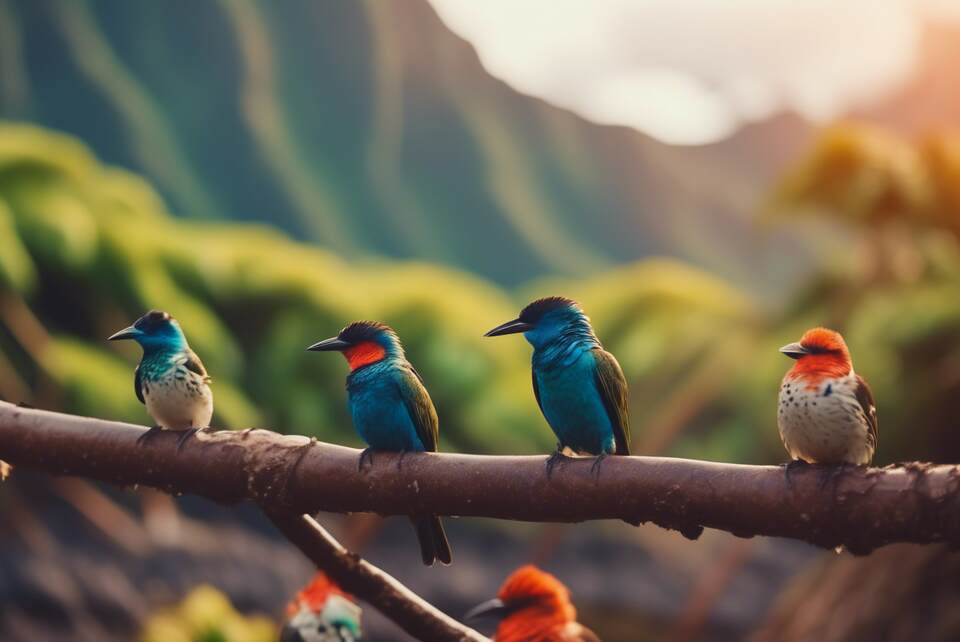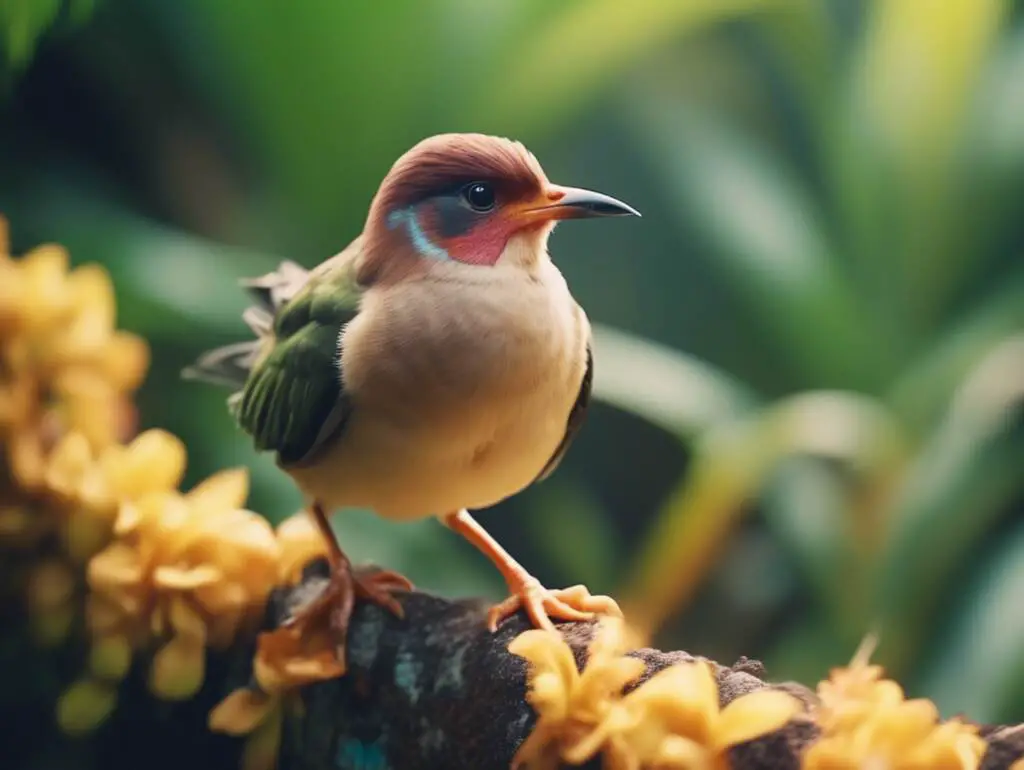The diverse range of bird species found in Hawaii is a testament to the unique biodiversity of the islands. With its isolated location in the central Pacific Ocean, Hawaii has become a haven for a wide variety of bird species, many of which are found nowhere else on Earth. From colorful songbirds to majestic seabirds, Hawaii offers birdwatchers and nature enthusiasts a truly remarkable experience.
Table of Contents
The Diverse Bird Species of Hawaii
The Bird Species of Hawaii
Hawaii is home to approximately 338 bird species, out of which 113 are native to the islands. These native species have evolved over millions of years in isolation, leading to the development of distinct characteristics and behaviors. Some of the most iconic bird species found in Hawaii include the Hawaiian Goose (Nene), the Hawaii Amakihi, the Hawaiian Crow (‘Alala), and the Hawaiian Monk Seal.
Threats to Hawaii’s Bird Species
Despite the rich diversity of bird species in Hawaii, many of these birds are facing threats to their survival. Habitat loss, invasive species, disease, and climate change are some of the primary factors contributing to the decline in bird populations. Conservation efforts are crucial to protecting Hawaii’s bird species and ensuring their long-term survival.
Endemic Bird Species of Hawaii
Hawaii is known for its endemic bird species, which are found exclusively in the islands. These unique birds have adapted to the island’s environment over thousands of years and play a vital role in the ecosystem. Some of the endemic bird species found in Hawaii include the Hawaii Elepaio, the Hawaii Akepa, the Oahu Amakihi, and the Maui Parrotbill.
Popular Birdwatching Locations in Hawaii
Birdwatching is a popular activity in Hawaii, with many travelers visiting the islands to catch a glimpse of the diverse bird species. Some of the best birdwatching locations in Hawaii include the Hakalau Forest National Wildlife Refuge on the Big Island, the Alakai Swamp on Kauai, and the Hosmer Grove on Maui. These places offer birdwatchers the opportunity to observe a wide variety of bird species in their natural habitat.
Conservation Efforts in Hawaii
Conservation organizations and government agencies in Hawaii are working tirelessly to protect the state’s bird species and their habitats. Efforts such as habitat restoration, predator control, captive breeding programs, and community outreach are all vital components of conservation initiatives in Hawaii. By raising awareness and implementing effective conservation strategies, Hawaii aims to preserve its unique bird species for future generations to enjoy.
Hawaii’s bird species are a treasured part of the islands’ biodiversity, offering both residents and visitors a glimpse into the unique natural heritage of the region. With continued conservation efforts and public support, Hawaii’s bird species can thrive and continue to enchant all those who appreciate the beauty of these remarkable creatures.

Conservation Efforts for Hawaii’s Birds
Conserving Hawaii’s Unique Avian Population
Hawaii is home to a diverse range of bird species, with many being endemic to the islands. The isolation of Hawaii has led to the evolution of unique avian species found nowhere else on Earth. However, these birds face numerous threats such as habitat loss, invasive species, disease, and climate change. As a result, conservation efforts play a crucial role in protecting Hawaii’s avian population and preserving the islands’ biodiversity.
Importance of Conservation Efforts
Conservation efforts are essential to safeguard Hawaii’s native bird species and prevent further decline in their populations. Without intervention, many of these species face the risk of extinction, which would not only be a loss in terms of biodiversity but also cultural significance. Birds have played a significant role in Hawaiian culture, art, and stories for centuries, making their preservation vital for the islands’ heritage.
Threats to Hawaii’s Avian Population
Hawaii’s bird species are threatened by various factors, including habitat destruction due to human activities such as urban development, agriculture, and deforestation. Invasive species like rats, cats, and mongoose pose a significant threat to native birds by preying on them or competing for resources. Diseases introduced by mosquitoes, climate change, and natural disasters further endanger Hawaii’s avian population.
Conservation Strategies Implemented
Several conservation strategies have been implemented to protect Hawaii’s unique avian species. These include habitat restoration projects to create safe spaces for birds to thrive, captive breeding programs to increase population numbers of endangered species, and the control of invasive species to reduce their impact on native birds. Additionally, community education and outreach play a vital role in raising awareness about the importance of bird conservation.
Collaboration and Partnerships
Conservation efforts in Hawaii often involve collaboration between government agencies, non-profit organizations, local communities, and researchers. By working together, these groups can pool resources, share expertise, and implement more effective conservation measures. Partnerships with landowners and stakeholders are also crucial in ensuring the long-term success of conservation initiatives.
Successful Conservation Stories
Several success stories highlight the positive impact of conservation efforts on Hawaii’s avian population. The recovery of the Nene, Hawaii’s state bird, from the brink of extinction is a testament to the effectiveness of conservation strategies such as habitat protection and predator control. The successful reintroduction of native birds to restored habitats also demonstrates the importance of ongoing conservation work.
Looking to the Future
As Hawaii continues to face environmental challenges, the need for sustained conservation efforts remains critical. By prioritizing the protection of native bird species and their habitats, we can help ensure the survival of Hawaii’s avian population for future generations to appreciate and enjoy. Through continued collaboration, research, and community involvement, we can work towards a more sustainable future where Hawaii’s unique birds continue to thrive.
Conclusion
The rich avifauna of Hawaii is a testament to the unique ecological diversity found on the islands. With over 338 bird species recorded so far, Hawaii stands as a crucial hotspot for bird enthusiasts and researchers alike. The islands’ isolated location has allowed for the evolution of a wide array of bird species, many of which are found nowhere else on Earth. From majestic native forest birds like the ʻIʻiwi and the ʻApapane to seabirds such as the Laysan Albatross and the Hawaiian Petrel, Hawaii offers a glimpse into the wonders of avian biodiversity.
Despite the challenges posed by habitat loss, invasive species, and climate change, conservation efforts in Hawaii are making a significant impact in protecting the state’s unique avian population. Organizations like the Hawaii Audubon Society, the Hawaii Bird Conservation Network, and the Department of Land and Natural Resources work tirelessly to preserve critical habitat, control invasive species, and raise awareness about the importance of bird conservation. These initiatives not only benefit Hawaii’s birds but also contribute to the overall health of the islands’ ecosystems.
Through collaborative research, community engagement, and innovative conservation strategies, Hawaii is paving the way for a better future for its avian residents. By raising awareness about the threats faced by native birds and taking action to address these challenges, Hawaii is setting an example for conservation efforts worldwide. It is crucial for both residents and visitors to the islands to support these initiatives and be mindful of their impact on Hawaii’s delicate ecosystems.
As we reflect on the diverse bird species of Hawaii and the ongoing conservation efforts to protect them, it is clear that the future of the islands’ avian population lies in our hands. By working together to preserve and restore habitats, control invasive species, and combat climate change, we can ensure that Hawaii’s birds continue to thrive for generations to come. Each bird species in Hawaii has a unique role to play in the ecosystem, and it is our responsibility to safeguard their future.
In this dynamic interplay between humans and nature, Hawaii serves as a living laboratory for understanding the importance of biodiversity and the interconnectedness of all living things. As we marvel at the beauty of Hawaii’s birds and the landscapes they call home, let us also remember our role as stewards of these precious natural resources. Together, we can protect Hawaii’s avian treasures and ensure a vibrant future for both birds and people on the islands.


